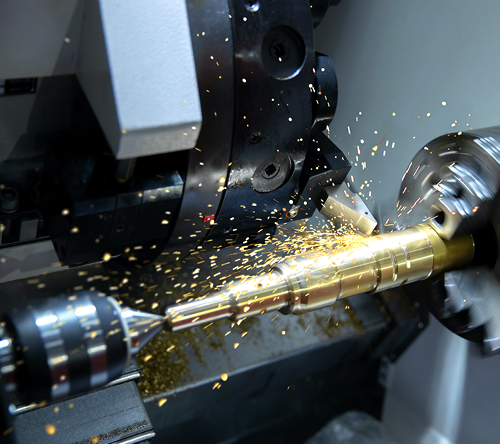Don't have an account?
Creating an account has many benefits: check out faster, keep more than one address, track orders and more.
Or
Checkout as a Guest
Place your order without creating an account for extra convenience.
How to Set Up a Driven Tool on a CNC Lathe: A Step-by-Step Guide
Contents
Introduction to Driven Tools
With the rise of multi-functional turning centres (CNC lathes), driven tools (also called live tools) have become a core part of modern CNC lathe operations. They enable off-centre and axial machining like milling, drilling, and tapping—directly on the lathe—reducing setup times and increasing part complexity without requiring a separate machining centre.
This guide covers how to properly set up a driven tool, including machine preparation, tool alignment, and best practices for achieving optimal performance.
What Is a Driven Tool?
A driven tool is a motorized spindle mounted on the turret of a CNC lathe, designed to rotate a cutting tool during secondary operations. It receives power from the machine’s live tooling drive system, allowing rotational cutting on a lathe setup.
Driven tools are essential for:
-
Side drilling and milling
-
Slotting
-
Engraving
-
Off-centre tapping
They’re typically used on machines with C-axis or Y-axis control and turret interfaces such as VDI or BMT.
CNC Lathe Driven Tool Setup: Step-by-Step
1. Check Compatibility
Before proceeding, ensure:
-
The machine supports live tooling (check for M13/M14 functionality).
-
The turret station is equipped to drive the tool.
-
The driven tool matches the turret’s mounting system.
-
Your post-processor or G-code includes live tool activation.
2. Inspect and Assemble the Toolholder
-
Examine the driven unit for signs of wear or damage.
-
Install the cutting tool securely using the correct collet or chuck.
-
Ensure correct tool extension - too short or long can affect performance or lead to deflection.
3. Mount the Tool onto the Turret
-
Clean both the turret face and the base of the toolholder thoroughly.
-
Install the unit into the turret station:
-
VDI holders: Align the drive tang and lock it using the clamping mechanism.
-
BMT holders: Secure using turret bolts for rigid face contact.
-
Ensure proper seating - misalignment here can lead to premature wear or poor machining results.
4. Alignment and Runout Check
For systems requiring manual alignment:
-
Mount a dial indicator to check runout on the cutting tool shank.
-
Rotate by hand and adjust until runout is within acceptable tolerance (ideally under 0.01mm or 0.0004").
-
Confirm the tool is square to the axis it will cut on, especially for side milling operations.
5. Set Tool Offsets
-
Touch off the tool manually or use an automatic tool setter to determine length offsets.
-
Record tool length in the appropriate geometry offset register.
-
On Y-axis machines, confirm both X and Y positioning if needed for side-entry tools.
6. Program the Driven Tool
Include correct M-codes and speeds:
-
M13 / M14: Start spindle (clockwise / counter-clockwise)
-
M15: Stop driven spindle
-
Assign proper spindle speed (S-code) and federate.
-
Ensure your toolpath accounts for tool orientation and clearance.
Best Practices for Smooth Operation
-
Coolant Delivery: Use internal coolant if available, especially for drilling. Make sure external nozzles are correctly aimed.
-
Noise Awareness: Any unusual sound from the toolholder during operation may indicate misalignment or bearing failure.
-
Consistent Torque: Always tighten the cutting tool using correct torque values to prevent slippage or damage.
-
Tool Life Monitoring: Track insert or tool wear closely, especially under high-load conditions or interrupted cuts.
Common Pitfalls to Avoid
-
Failing to activate the driven spindle in the G-code.
-
Skipping cleaning of turret and holder mating surfaces.
-
Overlooking centreline offsets on Y-axis applications.
-
Using improper tool length, leading to chatter or collision.
-
Applying excessive feed rates or speeds beyond toolholder limits.
Final Thoughts
Setting up a driven tool on a CNC lathe is all about precision and attention to detail. When done correctly, it transforms your lathe into a multi-tasking powerhouse—eliminating secondary setups and improving workflow efficiency.
Need help selecting a driven tool holder or cutting parameters? Please contact our technical team on 01924 869 615 or email sales@cutwel.net.

